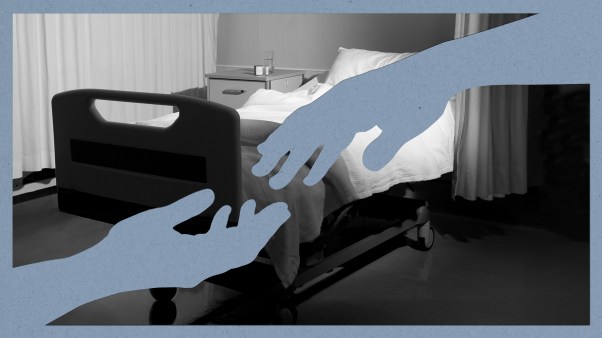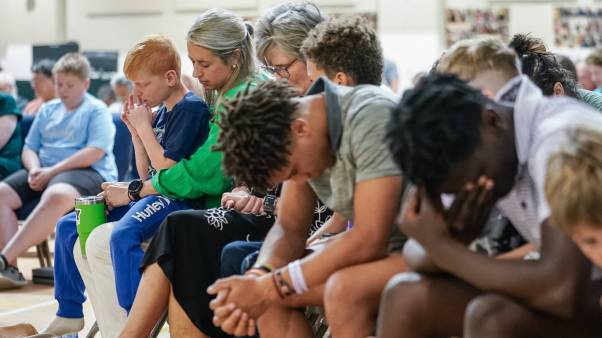“I’m interested to see what you know about this book I’m reviewing,” I said to my husband—a scientist—the other night.
“What’s it called?” he asked.
“The Immortal Life of Henrietta Lacks.” I waited while he made his thinking face.
“I don’t think I’ve ever heard of anyone by that name.”
“Ever heard of a cell line by the name of HeLa?”
“HeLa!” My husband brightened. “Of course! HeLa is one of the most common cell lines out there—HeLa cells have been influential in research on polio, cancer, AIDS, you name it.”
He paused for a minute, warming to his subject. “In fact, many cell lines cells used in laboratories that aren’t supposed to be HeLa cells actually are,” he continued. “Even if they say they’re not the HeLa line, they might be. HeLa cells are in absolutely everything.”
My husband’s response dovetails nicely with one of the main points that author Rebecca Skloot is trying to make in her book. Henrietta Lacks isn’t exactly a household name, but ask any scientist who works in any capacity with cells and cell lines, and HeLa is almost as ubiquitous as oxygen. That these ubiquitous, “immortal” cells came from somewhere—specifically, from an African American woman named Henrietta Lacks—is the story of this book, along with the stories of Henrietta’s family, friends, and the amazing HeLa cell line that lives on in cell culture labs around the world, despite the fact that Henrietta herself has been dead now for almost sixty years.
Henrietta Lacks was diagnosed with cervical cancer in 1951, when the youngest of her five children was just four months old. She received treatment at the public ward of Johns Hopkins hospital, where, while she was unconscious and without her consent, a small sample was taken both from her cancerous tumor and from the non-cancerous cells nearby. These samples were then given to a researcher named Dr. George Gey, who was collecting tissue samples in an effort to culture the world’s first immortalized human cell line—cells that would continually divide under laboratory conditions, allowing them to be used for research purposes without having to repeatedly harvest them from additional tissue samples. Gey had been working on developing an immortal cell line for thirty years, without success. By the time the sample from Henrietta’s cervix arrived in his lab, he and his assistants had handled what felt like innumerable tissue samples. Unlike the other cells in Gey’s lab, however, Henrietta’s cells didn’t die. They grew, and grew, and kept right on growing. They’re still growing today; a vial can be purchased from most biological supply companies for about $250.
Skloot’s narrative traces both the trajectory of those cells as they circumnavigate the globe (and beyond; HeLa cells have been taken into space to study the effects of antigravity) and the story-arc of her family, growing up bereft of wife and mother and not knowing anything about the HeLa cell line until more than two decades after Henrietta’s death. The strength of the book is twofold. First, from a bioethical standpoint, the questions Skloot entertains about morality, justice, and profit in the field of medical research are as probing as they are relevant. As she writes in the afterword:
When I tell people the story of Henrietta Lacks and her cells, their first question is usually Wasn’t it illegal for doctors to take Henrietta’s cells without her knowledge? Don’t doctors have to tell you when they use your cells in research? The answer is no—not in 1951, and not in 2009, when this book went to press.
But Skloot balances this statement with several examples of what could happen if doctors were not allowed to collect samples of cells without permission, and the pictures she paints there are equally unsettling.
The second strength of the book is in Skloot’s complete absence of journalistic distance from her subject. She notes that she amassed over a thousand hours of interviews with the people who figure prominently in her story, and she figures as a character throughout the book as well. Through her relationship with the Lacks family, Skloot’s story gains a sense of immediacy: the book is as much about how she got the story as it is about the story itself.
In The Vulnerable Observer: Anthropology That Breaks Your Heart, Ruth Behar writes about a theory of anthropology that allows the anthropologist to blur the traditional line between observer and subject. This “vulnerable observer” embraces the connections between researcher and human subject, and then uses these emotional ties as a lens through which to view the study. Skloot’s work is reminiscent of this vulnerable observer, as she slowly and painstakingly befriends members of the Lacks family in her journey to uncover Henrietta’s story. The result is ultimately humanizing: both for the many characters in the book as seen through Skloot’s intimate eyes, and for the legacy that a woman named Henrietta Lacks unknowingly left to the scientific community, and the world.
Elrena Evans is the author of This Crowded Night, a collection of stories forthcoming from DreamSeeker Books/Cascadia.
Copyright © 2010 Books & Culture. Click for reprint information.










